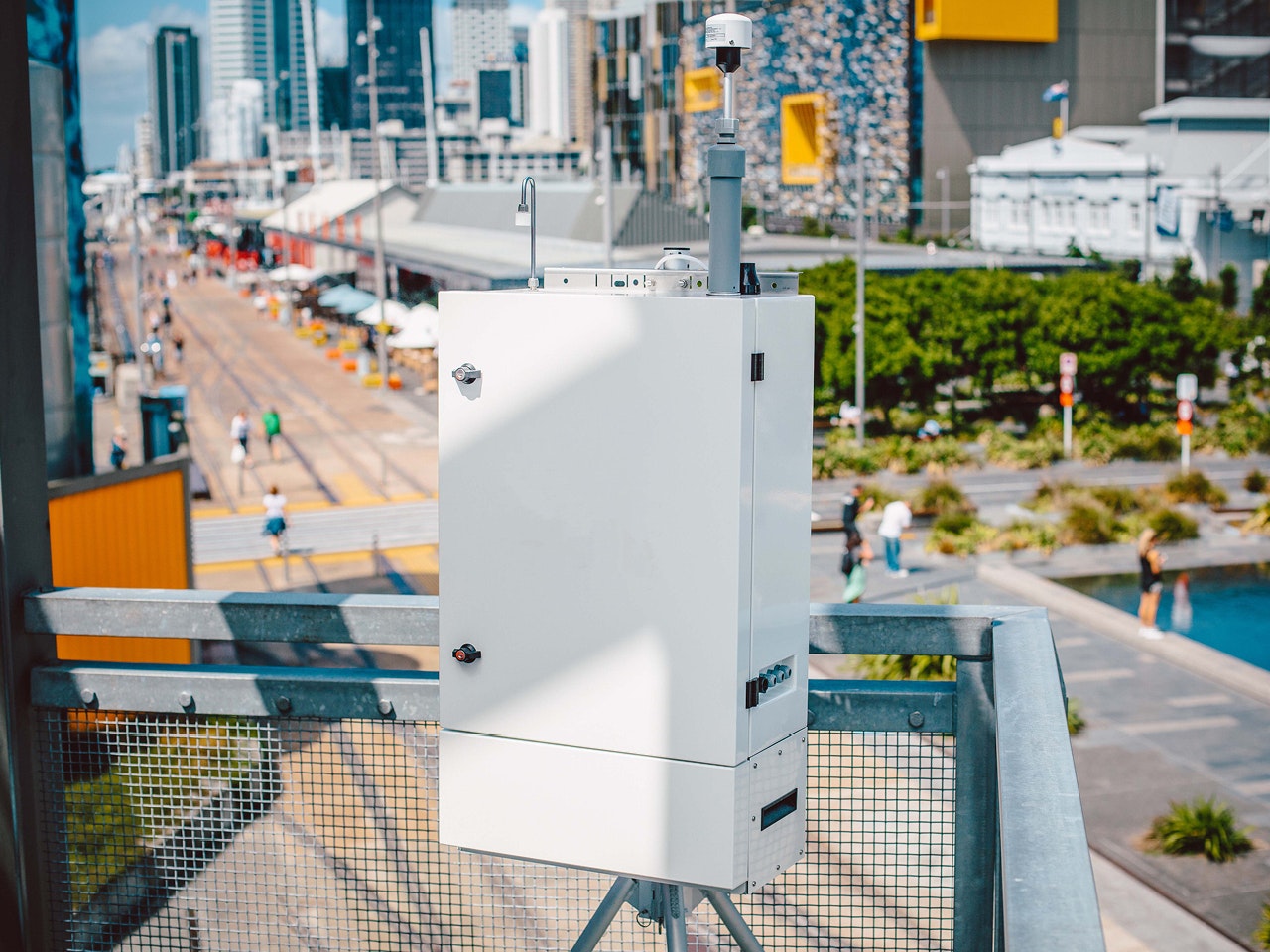Measurements
Methane CH4
Aeroqual designs and delivers monitors that measure methane (CH4). Choose from our perimeter or handheld air monitoring range.
Here we cover methane measurement principles, specifications and performance.
Overview of methane
Methane is a potent greenhouse gas that has significant impact on the earth’s climate. It is produced by both natural and human activities, including microbial digestion, fossil fuel production, transportation and waste management.
To effectively understand the sources and magnitude of methane emissions and develop strategies to mitigate them, it is crucial to have accurate, real-time, ambient methane measurements
Perimeter air quality monitors
The methane analyzer module features in our perimeter air quality monitors: AQS 1 Air Quality Monitor and AQM 65 Monitoring Station.
Methane module measurement principle
The CH4 module uses a Gas Sensitive Semiconductor (GSS) sensor.
The module contains a proprietary flow design that minimizes baseline drift and the sample air is filtered using a proprietary scrubber to reduce interferences. The sensor output is determined under both baseline and sample conditions, and a proprietary algorithm is used to calculate the methane concentration. The flow rate is controlled by a flow control orifice on the exhaust side of the sensor module (expected to be approximately 60 mL min-1).
Module specifications and performance
The CH4 module performance specifications are given in the table below.
CH4 Analyzer Module
Range (ppm)
0 - 500
Display Resolution (ppm)
0.01
Noise: Zero (ppm); Span (% of reading)
0.02; 0.3%
Limit of Detection (ppm)
0.04
Precision
0.4% of reading
Linearity (% of FS)
<1%
24 hr Drift: Zero (ppm); Span (% of FS)
0.04; 1%
Field test results
An Aeroqual AQS containing a methane module was co-located in November 2022 with a Picarro methane analyzer. The CH4 module produced a R2 of 0.87 and a mean absolute error (MAE) of 0.2 ppm. The low MAE value is indicative that the module has low zero and span drift. Performance in an Aeroqual AQM 65 would exceed this.
Methane module time series plot
Methane module scatter plot of data with linear regression and coefficient of determination
Module calibration and traceability
The sensor based methane system can be field calibrated using standard calibration equipment and reference gases. This ensures the module calibration is fully traceable to NIST primary standards.
The CH4 module factory calibration is achieved using a zero-air source, certified calibration gas standards and a certified gas dilution calibrator. The Aeroqual AirCal 1000 or 8000 systems can be used to calibrate the CH4 module in the field.
Calibration frequency will be dependent on the user’s data quality objectives and Quality Assurance Project Plan (QAPP), but based on the low rate of field drift the recommended calibration frequency is 1-3 months.
Interferences
The Aeroqual methane module is specific towards CH4 but other gases in the environment may also cause a response from the CH4 sensor. These do not indicate a fault. These effects are part of the module behavior and should be considered when examining data.
The CH4 module response to other ambient air pollutants is documented in the table below.
Pollutant
Test Concentration (ppm)
Typical Module Response (ppm)
Isobutylene
1.0
No response
H2S
0.1
No response
CO
1.0
0.05
Methane module expected lifetime
The methane module contains several components that are consumed during use. The chemical scrubber has an expected life of 2 to 3 years. The GSS sensor has an expected life of 2 to 3 years.
Handheld air monitors and fixed indoor monitors
The methane sensor head features in our handheld air quality monitors: Ranger and Series 500, and indoor fixed monitor range Series 900.
Methane sensor head measurement principle
The Aeroqual methane sensor head uses a Gas Sensitive Semiconductor (GSS) sensor. The sensing material for the sensor head is a n-type semiconductor, whose resistance decreases when the sensing layer is exposed to CH4. The sensor resistance is used to calculate concentration using a proprietary algorithm.
Sensor head specifications
The table below contains the methane sensor head specifications. It is designed for industrial health and safety monitoring and can be used on our Ranger, Series 500, and Series 900 products.
Sensor code
MT
Sensor type
GSS
Range (ppm)
0-10,000
Detection limit (ppm)
10
Accuracy of factory calibration
<±20 ppm + 15%
Display resolution (ppm)
1
Response Time
60 Seconds
Products that measure methane
The following products measure methane, as well as particulate matter and gaseous pollutants in real-time.
Articles
Case Study - Brownfield Redevelopment
Texas Landfill Study Gathers Large Scale of Quality Data on a Limited Budget
Case Study - Brownfield Redevelopment
Real-Time Monitoring Protects Communities During Reclamation Project on Nation’s Largest Municipal Utility
Blog - Remediation
Producing Defensible Data: The Importance of Keeping Calibration Certificates Up to Date
Inquire about our methane products
Our CH4 advanced monitoring systems deliver hyper-local data and real-time alerts, giving you actionable data to make the decisions that matter.












